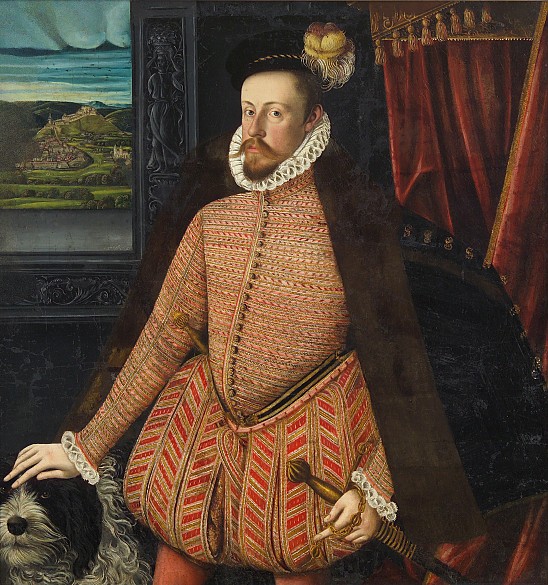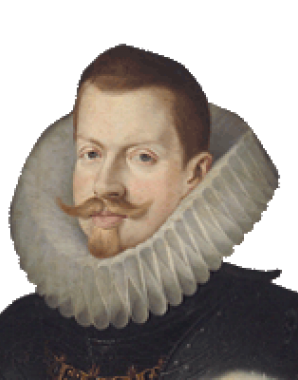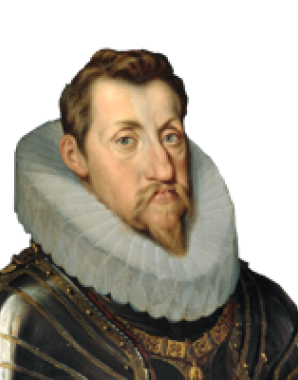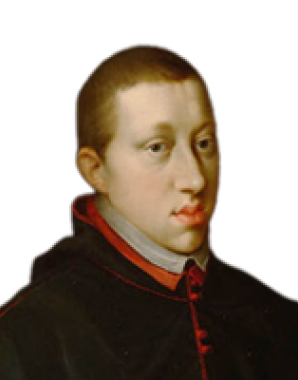Brief biographies of the surviving children of Charles II of Inner Austria
The large number of children made provision for their future – in particular that of the sons – problematic. Many of the daughters were married off to further the dynasty’s political plans. The dynastic unions contracted by several of the daughters resulted in very different destinies.
Considered to be extremely intelligent, the eldest daughter Anna (1573–1598) was married to Sigismund III Wasa, who was king of Poland and Sweden. Following her early death Sigismund married Anna’s younger sister Konstanze (1588–1631).
Maria Christierna (1574–1621) was married to the Prince of Transylvania, Sigismund Báthory, but was repudiated by him shortly afterwards. She withdrew to a nunnery and ended her life as abbess of the Hall Damenstift, an ecclesiastical institution for unmarried noblewomen.
Katharina Renata (1576–1595) was promised to an Italian supporter of the Habsburgs, Duke Ranuccio of Parma, but died at the age of nineteen before the marriage could take place.
Gregoria Maximiliane (1581–1597) was intended to marry the Spanish infante Phillip (as King Phillip III), but died at the age of sixteen before negotiations had been completed. Her place was taken by her younger sister Margarethe (1584–1611). Celebrated in 1599, the marriage was apparently exemplary, and despite its relatively short duration – Margarethe died in childbirth at the age of twenty-six – the archduchess developed considerable political influence at the Spanish court.
Maria Magdalena (1589–1631) was married to Cosimo III, grand duke of Tuscany. After her husband’s death in 1621 she ruled in the stead of her young son Ferdinando, skilfully representing Habsburg interests in Italy.
A number of the daughters preferred to become nuns, a choice that in this devout parental environment was seen as a more desirable alternative to marriage, as they could lead a more self-determined life than as mere pawns of dynastic interests. Eleonore (1582–1620) entered the Damenstift in Hall together with her elder sister Maria Christierna, whose marriage had been disastrous.
The eldest son, Ferdinand II (1578–1637), was to follow his father as ruler of Inner Austria. He would later continue the main line of the dynasty, since Emperor Rudolf II and his brother and rival Emperor Matthias had no legitimate male issue. After he rose to be head of the Austrian line, Ferdinand decided against assigning the Inner Austrian group of lands to one of his brothers, uniting it instead with the main dynasty. Thus the Church remained the only career open to the younger brothers.
Maximilian Ernst (1583–1616) was intended to become grand master of the Teutonic Knights but died before the office, held by his cousin of the same name, Maximilian III, a son of Emperor Maximilian II, became vacant. Having become a sort of hereditary sinecure for later-born sons of the dynasty, this well-endowed post fell to the youngest son of the ruler of Styria, Archduke Charles (1590–1624), who additionally held the lucrative bishoprics of Brixen and Breslau.
Charles’s third son, Archduke Leopold V (1586–1632), also started off his career in the Church but later returned to the secular state when his brother appointed him ruler of Tyrol. He is the founder of the cadet Tyrolean branch of the Habsburgs.















